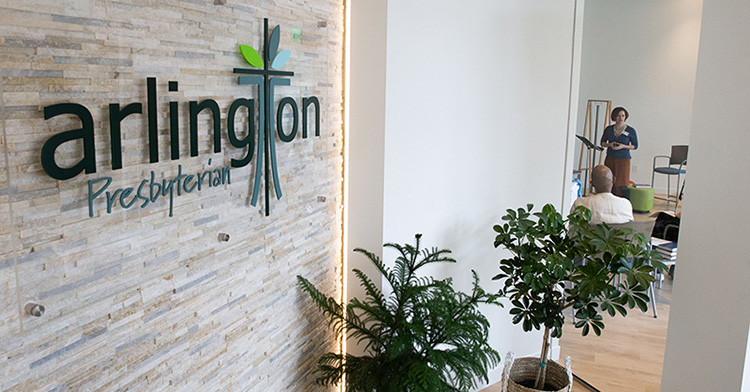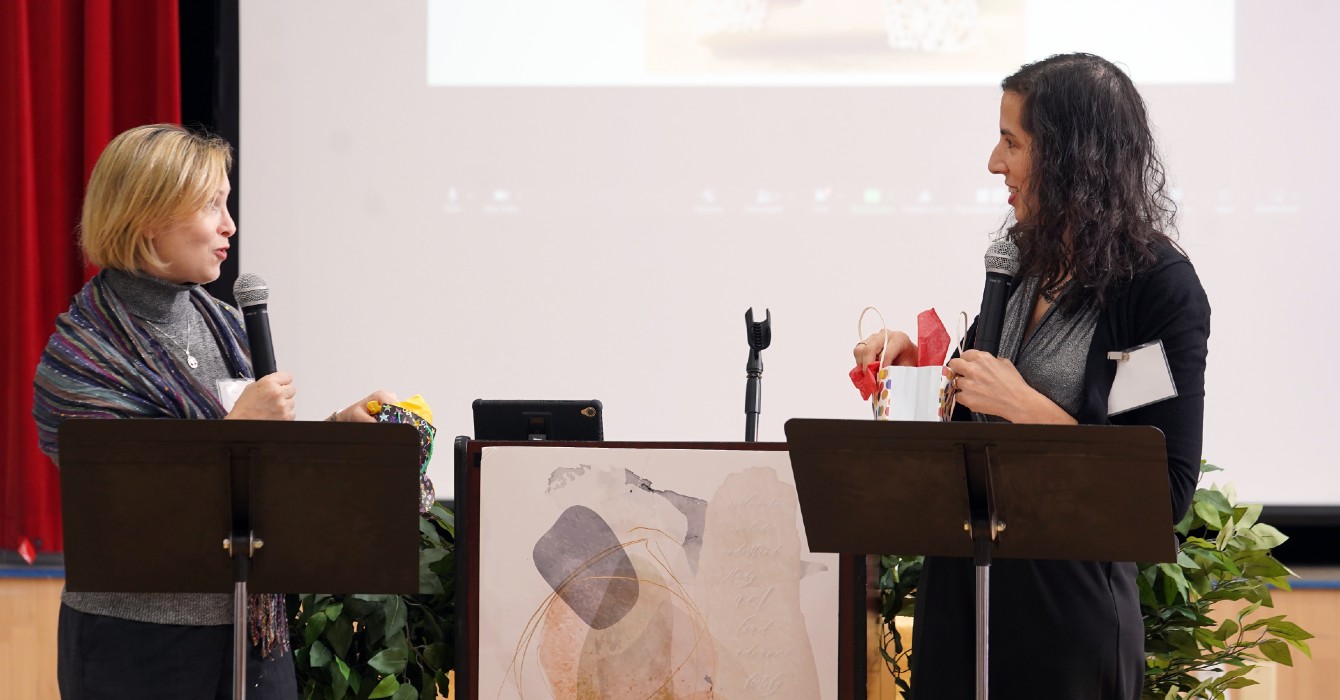Update: The Rev. Canon Ruth Woodliff-Stanley is the interim president of the Episcopal Church Building Fund.
For more than a century, the Episcopal Church Building Fund’s sole focus was just what its name suggests: it loaned money to build new churches and other buildings for the Episcopal Church. But in recent years, as the denomination began closing churches at the rate of four or five a month, that no longer made sense, says the fund’s president, Julia Groom.
So after an intense period of internal change, the fund emerged with an expanded mission, no longer simply loaning money but also helping distressed congregations address the complex issues surrounding the use of church buildings.
“We recognized that there was no national discussion around the issue of church buildings,” Groom said. “Or to put it in another way, ‘What are we going to do with all of these empty buildings, and how can we stop this decline?’”
Under Groom’s leadership, the fund began an ecumenical symposium, Buildings for a New Tomorrow, along with other programs to help congregations think about and address building-related issues.
“It was the first time that there was an honest, open, realistic discussion about church buildings,” she said.
 A lifelong Episcopalian, Groom became president of the fund in 2008. Before that, she worked for the American Red Cross for more than 25 years, including stints as executive director of state chapters in Maine, Utah and Pennsylvania.
A lifelong Episcopalian, Groom became president of the fund in 2008. Before that, she worked for the American Red Cross for more than 25 years, including stints as executive director of state chapters in Maine, Utah and Pennsylvania.
She spoke recently with Faith & Leadership about the fund and its work. The following is an edited transcript.
Q: Tell us about the building fund and how it evolved.
The building fund was established more than 130 years ago to help the westward expansion of the Episcopal Church in terms of actually building buildings. A group of bishops came together, raised some money and started the building fund, which is a revolving loan fund.
We help churches who want to build a new property or rehab a property. That was our primary focus for 130 years. When I came on board as president six years ago, I -- though a lifelong Episcopalian -- had never worked for the church, so I was very green. I had a lot to learn, and of course I looked at everything with a different perspective, because I was an outsider.
One thing I couldn’t figure out was that the Episcopal Church nationwide has been closing four or five church buildings a month for the past decade due to financial pressure and instability. So I thought, “Well, if we’re closing four or five churches a month, is it really the best use of our very small endowment to be loaning money to build new buildings?”
It just didn’t make sense. But the board was open to exploring how we could change and update our mission. For a couple of years, we asked ourselves, “What’s going on in the church? What are the trends? How can we be most relevant to the church of the future?”
We started thinking about what our new mission could be. We decided that we were going to hang on to the loan business, because that helped fuel the building fund financially, but we realized we didn’t have enough money [on our own].
The largest loan that we were making at that time was $350,000, and there’s really precious little you can do with $350,000. So we managed to leverage some ecumenical partners who had far more money, and this past September made a loan for $6 million. That’s something that can really help. So that’s No. 1.
No. 2, we started thinking about churches that were in financial distress and what we could do to help them vis-à-vis their buildings, and we came up with three related mission focus areas.
One, we recognized that there was no national discussion around the issue of church buildings.
Or to put it in another way, “What are we going to do with all of these empty buildings, and how can we stop this decline?” So we started something called Buildings for a New Tomorrow, which was a symposium to talk about the reality of our church buildings. It was the first time that there was an honest, open, realistic discussion about church buildings.
Q: And this was still within the Episcopal Church?
It was then. But last year our ecumenical partners became interested in Buildings for a New Tomorrow, and have since become involved. Now it’s financially supported by and has workshops and speakers from the United Church of Christ, the ELCA, the Disciples of Christ and the PCUSA. [The next symposium is scheduled for April 13-15, 2015, in Raleigh, North Carolina.]
I also felt a need for collaboration with the presidents from the other [denominational] building and loan funds, many of which are in a different stratosphere from our fund, which has only an $8 million endowment. So now I and the building and loan fund presidents from the PCUSA, ELCA, UCC and Disciples of Christ meet monthly to talk about ways to collaborate.
We all have the same problems. It’s not which denomination can be the smartest, brightest, fastest, and do it the best. It’s how can we all work together to do the work that we’re all doing.
In addition, we started something called the Recasting of Building Assets Process, a yearlong process where we bring together a group of churches -- usually in a state or a diocese -- and work with them to figure out how they and their buildings can become financially self-sustaining, and if not, then how they can talk through the possibility of selling the building if they don’t need it, or merging with another church, and how to work ecumenically in their community, all toward becoming a thriving, vital part of their local community.
We did a pilot project in northwestern Pennsylvania, and then in Iowa, Albuquerque and Fort Worth, and this winter we’re starting in western Massachusetts.
Q: How does that process work?
It’s a series of four meetings over a year. In between, we connect with the parishes and their teams via WebEx to keep the momentum going. It’s mostly helping them first to figure out how they can become financially self-sustaining. Sometimes it can be as simple as looking at their budget and figuring out how they can stop the bleeding. If they’re living on an endowment, how they might be able to use their building to develop revenue, and if they’re already doing that, how they might use it better.
We help them with change management. We help them to crack open their church to become a part of the community, which in the Episcopal Church has not always been our strong suit. We do things like get them to do community focus groups and interview people about what they would like to have in a faith experience.
Q: You’ve mentioned community several times and said you wanted these church buildings to be part of a vibrant community. Is this also a new focus of your organization?
Absolutely, for the Episcopal Church Building Fund, and I’m seeing a similar desire with our other building and loan fund partners -- not only to open up to the community but to reach out to other denominations and identify community problems and ask how might we work together to solve that problem.
Q: Is your mission always to preserve a building as a church building? Do you sometimes simply conclude that a building should be closed or sold?
Absolutely. In New England, for example, you can go into a little community and find three Episcopal churches within a three-mile radius. How does that make sense? So my thought process would be, “OK, let’s have one church where we worship, a second church be a place where we do the mission of all three churches, and sell the third one and use the money for the mission, or how could we develop a revenue center from that third building to support the mission.”
Q: How do you help people make and then execute these often very painful decisions?
What we’re doing is about a culture shift over a year. People have told me that that is impossible, but I’ve already seen that it’s not. It depends on the community and the churches.
Some of them need some tough love. We start with a reality check about the church. We lay out the landscape, and we say, “OK, here’s what’s going on. Here are the numbers; here are the statistics. We are sucking wind, and we are going down.”
That’s a depressing story. It’s the Good Friday story. But it gets everybody on the same playing field. They hear the same information. The laypeople and the lay leadership sit there and they say, “Oh my God, it’s not just us.”
They’ve had this sense of shame and isolation. They thought their church is the only one that’s tanking.
So when you say, “Look, it’s happening to everybody; here’s your chance,” they realize that the Holy Spirit is jumping up and down and screaming, “Come, follow me; there are better ways to do this.”
And they say, “We’ve got a choice. We can dig our heels in, and we can be fearful and dream of the ’50s when everything was so fabulous, or we can figure out how we are going to make a change. And our legacy is going to be a new church.”
It doesn’t always work. Sometimes churches quit. They get into it, and they’re like, “Wow! Too hard, too much, too tough; we’re out.”
But there are others. We worked with three Episcopal churches in one town for a year, and none of them got along. They had a lot of history and a lot of baggage and all this crazy stuff -- so much dysfunction and animosity. And they didn’t get along with the diocese leadership and did not see them as a trusted partner.
But at the end of the recasting process, one of the church representatives stood up and invited the diocese and staff to preach at their church and then to meet with them afterward about merging with the other two churches.
And a month after the process was over, they sent us a picture of a sign at the entrance to their town with the names of all three Episcopal churches on it that were now worshipping with one clergyperson in one church.
They said, “What matters here is the Episcopal presence in our community, not our individual churches.”
That is as close to a miracle as you can get.
Q: You said at the outset that when you came on board, the fund had to rethink its mission to adapt to changed circumstances. How hard was it to effect cultural change within your own organization?
It was challenging. I had been hired by a board that was willing to make a change. The organization had been around for almost 130 years, and this was the first time they had hired as president a layperson and a woman.
The board was ready for some kinds of change. As we all know, that’s easy in the abstract, but when you get into it, it can be painful. There were things that we had to let go of that were difficult. There were changes that had to be made that everybody was not completely happy about.
But the toughest part for me as a leader was that my board -- some of my board -- would ask, “Where are we going to wind up? Where are we going to go?”
I felt like I was looking through a kaleidoscope and turning it, and everything wasn’t in focus yet. I knew that there was a better place for us -- a bigger, better, more consequential, helpful mission. I didn’t have all the parts and pieces together. I didn’t know yet.
I would say, “I’m not sure where we’re going. I just know we’re not staying here. It doesn’t make sense. It doesn’t make sense sitting on this little pot of money, loaning it out to churches to build buildings when we’ve got so many of them we don’t know what to do with.”
That period of living in the wilderness -- that was not easy. It was a period of mystery, of unknowing, of all of us as an organization learning about the church, thinking about ourselves and really having an openness to the Holy Spirit.
Why is that so hard? But it is.













